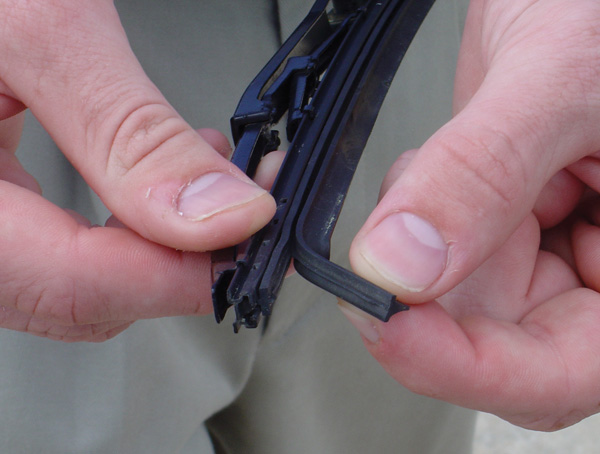 Q. How come there are so many different lengths, kinds and prices for windshield wiper blades? I’m confused about which one to choose.
Q. How come there are so many different lengths, kinds and prices for windshield wiper blades? I’m confused about which one to choose.
A. Replacement wiper blades come in different lengths to fit different windshields. Some vehicles require much longer blades than others (up to 28 inches) because their windshields are larger and have more glass area to wipe.
If a replacement blade is too short, the area cleared by the wiper may be too narrow and limit the driver’s field of vision at the top and bottom. If a replacement blade is too long, it may hit the top or bottom edge of the windshield, or interfere with the other blade as it moves back and forth.
A blade that is too long also may not follow the curvature of the glass very well and lift away from the surface, leaving smears or unwiped areas.
For these reasons, replacement blades must always be the same length as the original blades (not necessarily the same length as the old blades that are on a vehicle because someone may have replaced the original blades with ones that are not the correct length). Always refer to an application chart to find the correct length.
As for the range of blade types that are available, the higher-grade, premium-quality blades are typically made with better materials (which may include synthetic materials or combinations of natural rubber and synthetics). The superstructure or frame that holds the wiper blade may also have more contact points for better distribution of force against the glass, small wind deflectors or airfoils to create a down force at high speed, and/or slots to reduce wind drag, lift and noise.
The latest wiper designs don’t even have a superstructure or frame to support the blade. “Beam”-style blades that are used on late-model vehicles have a spring molded into the blade itself. This allows the blade to better hug the glass.
Beam-style blades are more expensive, but provide more even pressure across the glass, and won’t clog with ice or snow like a conventional wiper blade. They can also be retrofitted to many older vehicles, too.
Q. How often should I replace my wiper blades?
A. As often as necessary to maintain good visibility during wet weather. For most motorists, that means changing the blades once a year, or at the first sign of trouble, such as streaking, chattering or noise.
Yet, surveys have found that 78% of motorists do not replace their wiper blades regularly. Most neglect their wipers until the blades are literally falling apart. Only then will they reluctantly buy a new blade (when they should be replacing BOTH blades).
Postponing the replacement of worn wiper blades to save a few bucks is NOT a good idea because it endangers driving safety. If you’re caught in a downpour with bad blades, will you be able to see the road ahead clearly? Possibly not.
There is also a risk of damaging the windshield. If the rubber blade tears or falls apart, it may allow the metal frame to scrape against the glass, leaving a permanent scratch across the windshield. A windshield can cost hundreds of dollars to replace, whereas pair of wiper blades can be usually be replaced for $10 to $35 on most vehicles.
Don’t forget the rear wiper blade on cars, SUVs and minivans that have a rear liftgate or hatchback. That blade may be even more tattered than the front blades. The rear blade is also important not only for rearward visibility during wet weather, but also when driving on dusty gravel roads.
Dust tends to accumulate on the rear liftgate or hatchback and obstructs the view of vehicles that are behind you. That can prove dangerous if you decide to change lanes and don’t see a vehicle that is fast approaching from behind.











